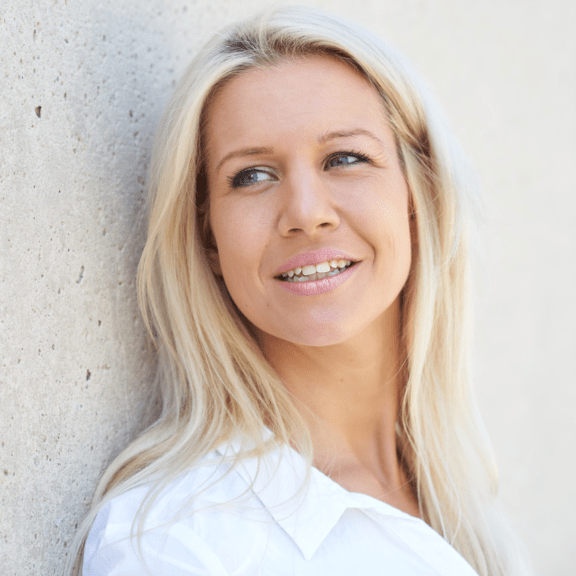eSelly: When not to think directly about earning money #DHDL
In "Die Höhle der Löwen", the questions about turnover and earnings of the young companies are among the most important. Often not included in the finished version, but just as important are the numerical questions aimed at determining when the start-up in question might be able to earn money. But sometimes everything is different. The example of eSelly was a good illustration of the requirements that have to be met by investors for such a special case.
Friday,
12.05.2023

On Monday, founder Olaf presented an app in the cave that should revolutionise online shopping. eSelly sees itself as a kind of cross between an interactive marketplace and a social media app, because users can not only put products online that can then be favoured, liked, shared, commented on or even bought directly by other users, there is also the possibility of arranging video calls between buyers and sellers to clarify specific questions or to show the product again in more detail. This should create a better basis of trust and thus offer smaller and private sellers better opportunities.
In addition, eSelly wants to build on two major trends: the universally demanded re-enforcement of local retail is to be supported by the “nearby” function. A tab under which you can find offers from suppliers not far away if you don’t want to have anything sent to you. The option for live sales shows is meant to support the trend of live commerce and online sales shows.
The lions are visibly taken with the demonstration, but Ralf Dümmel soon asks about the sources of income. The founder explains that he is not yet monetising the app for private individuals at all, but commercial sellers pay a fee of 7% of the purchase turnover. An additional source of income is the linking to the shops of the traders, who pay a price for each click. However, the latter will not play a role in the further discussion.
Soon the lions go into more detail about the actual figures. The viewers learn that eSelly has already been online for 3 months, has about 3000 active users, of which less than 1% are traders.
Judith Williams had previously asked about the turnover of the young company, so the founder sends these figures ahead, and then explains that these few commercial sellers have already generated a turnover of 19,000 euros.
Since he didn’t really answer the question with that, he is interrupted by Ralf Dümmel with the remark that the turnover must therefore be 7% of these 19,000 euros.
With this approach, it’s okay in principle, and you might still be a bit better off. However, founders of such platform commission models should be careful when answering the question about turnover with the total turnover that has run through the platform. This value, which is often declared as “external turnover”, should not be used to sell the previous economic success as better than it actually was. And investors who are not entirely inexperienced will always notice this immediately and ask about it, so that you have to admit anyway that your own actual turnover is significantly lower. This can quickly leave you with a bad feeling and perhaps even jeopardise further talks.
But at eSelly, this was by no means the end of the discussion about numbers. You could see some of the lions slightly grimacing at this discussion about turnover before new lioness Janna Ensthaler intervened with a spirited plea. She pointed out the German focus on turnover and earnings and emphasised that there are models that need to be approached differently. That the biggest companies in the world were often such models, but thought big enough.
And with that, she hits a point: the really big models have to focus on the growth of their users for quite a while in order to just reach a certain size. They are highly scalable, but they don’t earn that much money per user or per completed sale – for example, through a commission model. But precisely because of their high scalability – once built, the variable costs are often very low, and the fixed costs often do not grow very quickly either – even these small amounts add up at some point. You could say that it adds up quite a lot over the course of time. But only after a certain size, before that a lot of money is needed, as the lions for eSelly also discovered.
But founder Olaf scores points with his history as an already successful founder of a 75-employee company with an annual turnover of around 40 million euros.
He knows how to be profitable, but now wants to build something really big, which will also scale faster and perhaps soon go international, and it is precisely for this speed that he needs the support of the lions. He emphasises that he would even be willing to put in more money himself if he had the right partners.
The lions are naturally very enthusiastic about the man who has already achieved so much but has remained so bondenständig to recognise where he still needs help with his new venture. But still, one after the other drops out because no one seems to be the right partner for such a model.
Only Janna Ensthaler, who had previously taken up the cudgels for exactly this kind of business model, still wavers and asks a few final questions about the structure of the share distribution and the development status of the app.
The answers seem to satisfy her, because in the end she offers the founder the desired 250,000 euros, but wants 30% instead of the 20% offered. Judith Williams and Janna Ensthaler agree that it is indeed about a very risky investment, while the founder talks on the phone with one of his developers involved at the end of the entrance tunnel.
In the end, the deal comes through for 30%, and both founder and investor seem very happy about it.
In fact, a few years ago, especially in the tech start-up world, we saw a veritable inflation of the argument “with this model, you shouldn’t focus on monetisation yet”. But this was not always justified. In fact, it is rather rare for such a volume model to be used, and there do not seem to be many investors who are able to distinguish exactly when this other strategy makes sense at all. And what many also tend to overlook: even if it is true, it does not relieve one of the need to collect, track and constantly keep an eye on key figures, on the contrary. Volume models open up a real battle of key figures, it’s just that others play the biggest role. Instead of turnover and margins, it is user numbers, user growth, user conversions and much more. Various activity indicators are also important in almost every model.
Volume models are therefore not an excuse and certainly not suitable for founders and investors who are lazy about numbers. They are complex, hard work and very risky. But when they work, they can become huge. Let’s keep our fingers crossed for founder Olaf that his is one of them.
Photo (above): TVNOW / Bernd-Michael Maurer

Ruth Cremer
Ruth Cremer is a mathematician and consultant as well as a university lecturer in the field of business models, key figures and financial planning. As a former investment manager, she knows what investors look for and also helps with pitch and document preparation in the investment or acquisition process. Since 2017, she is involved as an external consultant in the selection and preparation of the candidates in "Die Höhle der Löwen".
